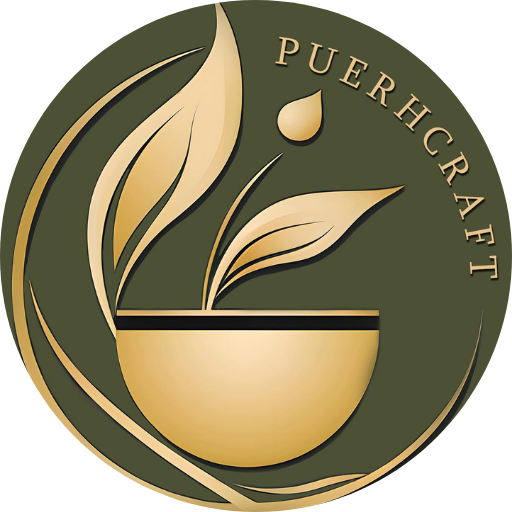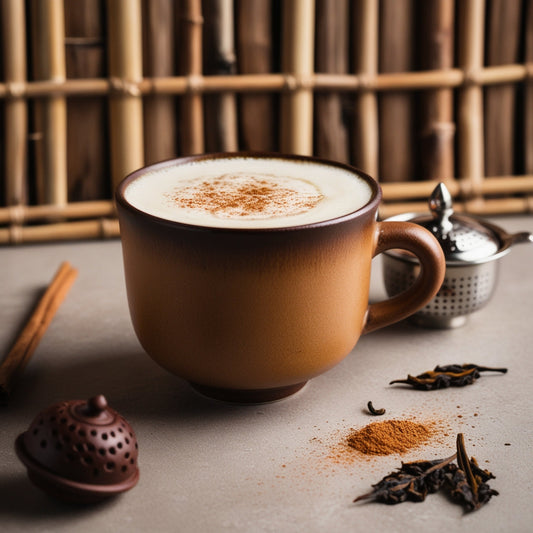Introduction
In the vast world of teas, the rich traditions and diverse flavors of Pu-erh tea and Yerba Mate offer tea enthusiasts unique experiences. This detailed comparison will explore their taste profiles, production and preparation processes, caffeine content, health benefits, and histories. By addressing these key points, we aim to help you better appreciate and enjoy these exceptional teas. Whether you are a seasoned tea lover or a newcomer, discover which might become your new favorite.
Table of Content
- Introduction
- What is Pu-erh tea
- What is Yebra Mate
- Pu-erh vs Yebra Mate
- Conclusion
What is Pu-erh Tea?
Pu-erh tea originates from the Yunnan Province, home to the large-leaf tea trees known as Dayeh. This region's unique biodiversity and climate create the perfect environment for these special tea trees. Dating back to 225 BC, Pu-erh is one of the oldest types of tea in the world.
Types of Pu-erh Tea
Pu-erh tea comes in two main types: Raw (Sheng) and Ripe (Shou). The classification is based on the level of processing after the tea leaves are picked and withered.
Raw Pu-erh Tea
Raw Pu-erh tea is made from the large leaves of Camellia sinensis and processed similarly to green tea. The leaves are roasted to halt oxidation and do not undergo the piling process.
Production Process
To produce Raw Pu-erh tea, workers harvest large leaves of Camellia sinensis and quickly roast them to stop oxidation, similar to green tea production. After roasting, the tea leaves are sun-dried and then steamed to be compressed into cakes or round disks. These compressed cakes are then stored to age until they achieve the desired taste. The key difference in Raw Pu-erh production is the absence of the wet piling process used in Ripe Pu-erh.
Aging Potential
Raw Pu-erh tea is designed to age over a long period, developing a fuller flavor with time. It typically has an aging potential of about 60 to 70 years, depending on the tea maker's goals.
Taste, Flavor, and Aroma
Raw Pu-erh tea offers a wider range of flavors. Younger Raw Pu-erh tea usually has bittersweet and floral notes. As it ages, the taste, flavor, and aroma transform significantly, losing the bitterness and developing a chestnut aroma. Raw Pu-erh maintains a fresh scent, a modest astringency, and a sweet aftertaste due to the absence of the wet piling process.
Color of Drink
Raw Pu-erh tea typically has a bright yellow color.

Ripe Pu-erh Tea
Producers make Ripe Pu-erh tea from the large leaves of Camellia sinensis and use a wet piling process to stimulate fermentation.
Production Process
The production of Ripe Pu-erh tea starts similarly to Raw Pu-erh, with harvesting, withering, pan-frying, sun drying, and aging. However, Ripe Pu-erh undergoes a wet piling process responsible for its fermentation and accelerated aging. Once the specific fermentation level is reached, the tea is un-piled and aired out. Most tea makers age Ripe Pu-erh for about 10 years, as it generally reaches its optimum taste by then.
Aging Potential
Ripe Pu-erh tea has an aging potential of approximately 20 years, after which its flavor development plateaus, making further aging unnecessary.
Taste, Flavor, and Aroma
The wet piling method and fermentation give Ripe Pu-erh tea a mild flavor and a basic leafy rich smell. It is smooth and mellow, ideal for daily drinking, with a richer and smoother aroma compared to Raw Pu-erh.
Color of Drink
Ripe Pu-erh tea has a dark red color, a result of the accelerated aging process.

What is Yebra Mate
Yerba mate is an herb native to South America and is used to make the national drink of Argentina, Paraguay, Uraguay and Southern Brazil. Discovered by the indigenous peoples of the forests of Paraguay and Southern Brazil. The herb was a dietary staple for agriculture-dependent and nomadic and warrior-based lifestyles, depending on the tribe.
Production Process
The yerba mate tree is a species of the holly family with leaves that are evergreen and produce small fruit berries that flower into greenish white flowers. The leaves and tender stems are often handpicked then dried in a controlled environment. They are sometimes roasted over a wood fire before they may be broken or cut to create the final herb for consumption. Some yerba mate is even aged in cedar or other wood for up to a year or more for added flavor.
Taste, Flavour, Aroma
Yerba mate is often described as earthy, vegetal, herbaceous and bittersweet. Imagine a fresh rainforest floor and you can likely picture the flavor of yerba mate. But the flavor of yerba mate can vary subtly based on growing regions, cultivation practices and brewing techniques. Many styles of yerba mate contain tender stems and branches from the tree, which can impart a woodsy flavor to the tea.
Color of Drink
Yebra mate has Yellowish Green color.
Pu-erh V/S Yebra Mate
Health benefits
Pu-erh tea aids bowel movements, Improves digestion, and Lowers cholesterol, Gives calming effect, Refreshes mind. Reduces cardiovascular diseases. Functions as an antioxidant, Increases metabolism, Useful for weight control. Whereas Yebra mate Improves digestion, Increases immunity, Keeps digestive tract healthy, Increases concentration, mental alertness, mental clarity, Reduces cardiovascular diseases, Have anti-bacterial properties, Useful for weight control.
Caffeine Content
Pu-erh tea contains an average of 65 mg of caffeine. The average cup of yerba mate contains about 85 mg of caffeine.Studies show that large amount of Caffine cause "Tea intoxication".
Why Pu-erh tea is best
Pu-erh tea stands out for its deep-rooted history, intricate aging process, and diverse flavor profiles that evolve with time. Its health benefits, including digestive support, weight management, and antioxidant properties, combined with its unique cultural significance and low caffeine, make it a compelling choice for those looking to explore and experience the richness of traditional Chinese tea culture. Pu-erh has more aging potential compared to Yebra mate.
Conclusion
Pu-erh tea and Yerba Mate both come with long histories special ways they are made, and many health benefits, which make them great picks for tea lovers. Yet, Pu-erh tea has an ancient history, a complex aging process, and changing flavors that give a special taste every time you drink it. Its smaller caffeine level and great aging abilities also increase its attraction making it an appealing option for those looking for a classy and classic tea experience.
If you're just stepping into tea culture or want to try new tastes. Explore Pu-erh tea with Puerh Craft. Learn about the deep history and health benefits that make it so popular for hundreds of years. Get to know Chinese tea culture and find out why Pu-erh tea could be your next favourite drink.
Q&A
Q. What is the main difference between Raw Pu-erh tea and Ripe Pu-erh tea?
A. The main difference lies in the processing methods. Raw Pu-erh tea is processed similarly to green tea, with roasting to halt oxidation and no wet piling process. In contrast, Ripe Pu-erh tea undergoes a wet piling process, which accelerates fermentation and aging, giving it a darker color and smoother flavor.
Q. How does the aging potential of Pu-erh tea compare to Yerba Mate?
A. Raw Pu-erh tea can age for 60 to 70 years, developing a richer and more complex flavor over time. Ripe Pu-erh tea has an aging potential of about 20 years. In comparison, Yerba Mate does not benefit significantly from long-term aging and is typically consumed fresh or aged for a shorter period for added flavor.
Q. What health benefits does Pu-erh tea offer?
A. Pu-erh tea offers numerous health benefits, including aiding digestion, lowering cholesterol, providing a calming effect, refreshing the mind, reducing cardiovascular diseases, acting as an antioxidant, increasing metabolism, and being useful for weight control.
Q. How does the caffeine content of Pu-erh tea compare to Yerba Mate?
A. Pu-erh tea contains an average of 65 mg of caffeine per cup, while Yerba Mate has about 85 mg of caffeine per cup. This makes Pu-erh tea a slightly lower-caffeine option compared to Yerba Mate.
Q. Why should someone new to tea consider trying Pu-erh tea?
A. Pu-erh tea offers a unique and evolving flavor profile due to its intricate aging process, making it an intriguing choice for tea enthusiasts. Its health benefits, cultural significance, and lower caffeine content make it a compelling option for those seeking to explore traditional Chinese tea culture. With its ability to age gracefully, Pu-erh tea provides a rich and rewarding tea-drinking experience.






